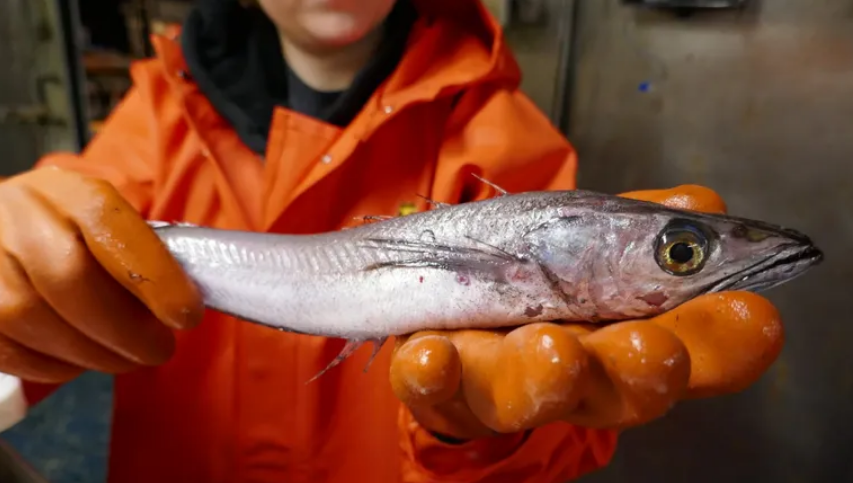By Representative David Gomberg, House District 10
Hello Neighbors and Friends,
Every day in Salem, we receive over 100 emails. I read them and answer them. And increasingly, I’m also encouraging writers to add their thoughtful comments to the formal record on these bills when or if they advance through the legislative process.
Most of the 3000-plus bills introduced this year will never get a hearing. But when they do, a new option allows you to submit written testimony online. That can be a sentence, a paragraph, or a page. All are considered by committee members as they advance, amend, or reject legislative concepts.
A good example is my bill to provide more accountability and transparency at the Oregon National Primate Center. I wrote about this a few weeks ago and received many letters sharing my concern. If you wish to add your comments to the conversation, go to the bill’s page on OLIS, and click on the link at the top right that says “Submit Testimony”.
Read the story here. Add your testimony to the formal record here.
There are many bills generating a strong response this year. If you have those strong opinions, I welcome your emails. And I urge you to add them to the public record as well. The opportunity to submit written testimony opens when a bill is scheduled for a hearing and it closes 48 hours after the hearings conclude.
There is also an opportunity to appear before committees – either in person or “remotely” over a computer link. Advance registration is now required using the same link as for written remarks. The ability to testify without driving to Salem is a good thing for those of us that live further away. But that also means more people sign up. Time is limited and often appearances are necessarily limited to just a few minutes for each witness.
The point here is that it is easier than ever to be involved and effect the outcome of legislation that will affect you.
I know most of us are disturbed by Russia’s war against Ukraine. But seldom do we stop to consider how this conflict may affect our local economy. This includes Oregon’s seafood industry.
Before Russian forces invaded in February 2022, American exports of Pacific Hake — or Whiting — to Ukraine came to nearly $95 million worth of fish. But that market’s been gutted in the wake of the ongoing hostilities.
The wartime blow comes as many seafood suppliers and processors are recuperating from the pandemic’s disruption over the last three years. Restaurants shut down or limited orders due to COVID-19 fears and restrictions. These are some of the reasons I’ve introduced HB 2909 to get more of our local seafood into local restaurants.
Only 10 percent of seafood in Oregon Coast restaurants’ is locally sourced. If we increased purchases by just 10 percent, $90 million could be generated annually in our rural coastal communities. That’s roughly what we used to send to Ukraine.
Prior to the pandemic, Oregon commercial fisheries generated nearly $600 million in income for the state economy.

Pacific Hake – NOAA Fisheries West Coast
As changes facilitated by the new Supreme Court manifest themselves, one subject that may gain increasing attention is the question of physician-assisted suicide. So far 19 states have passed a medical aid in dying act, including Oregon, Washington, and California who allow this end-of-life option once it is determined that the person’s situation qualifies under physician-assisted suicide laws.
In 2021, 383 residents of Oregon received prescriptions under the Death With Dignity Act. Most (81%) were 65 or older, and cancer was the most common diagnosis (61%). Most patients died at home (95%), and 98% were enrolled in hospice.
To qualify to utilize the Oregon Death With Dignity Act, an individual must have decision-making ability and a verifiable terminal illness with less than six months of life remaining. In addition, they must be at least 18 years of age, a resident of Oregon and capable of making and communicating health care decisions to health care practitioners.
Two physicians must determine whether a patient meets these requirements. This, plus additional information, gets reported to Oregon Health Authority. There is a cost for this medicine that’s not covered by insurance. It varies from $500 to $800.
There is no problem with life insurance companies paying out benefits, as this is not suicide. The cause of death is the terminal diagnosis the person received from the physician.
Pain is mostly not reported as the primary motivation for seeking physician-assisted suicide in the United States. The three most frequently mentioned end‐of‐life concerns reported by Oregon residents who took advantage of the Death With Dignity Act in 2015 were decreasing ability to participate in activities that made life enjoyable (96.2%), loss of autonomy (92.4%), and loss of dignity (75.4%).
Two out of three voters nationwide said if they “had an incurable, terminal illness, still had a sound mind, had less than six months to live, and … met the legal requirements”, they “would want the option of medical aid in dying.”
Folks in Salem are telling me the snow on the beach must be beautiful. It is! But I invite them to grab a chainsaw and come out for the weekend to help clear the trees and branches that used to be my front yard…
Winter on the Oregon Coast is anything but boring. When powerful Pacific winds meet turbulent ocean waters, it’s a spectacular sight. Tall waves crash into rocky cliffs and sandy shores, offering an awe-inspiring display by Mother Nature.
Storm-watching season on the Oregon Coast generally occurs in the winter months, from November through March. During winter storms, wind gusts can reach more than 50 miles per hour, with waves towering more than 30 feet. It’s an awe-inspiring experience, but also important to think about safety.
One cubic yard of saltwater weighs nearly a ton, and waves travel 15, 20, maybe 25 mph. They exert a tremendous amount of force that will easily knock even the sturdiest of folks to the ground, leaving them at the mercy of the storm.
- Pick your spot. Look for locations well above the action and away from cliff edges.
- Just because the parking lot may be relatively safe, the nearby trails may not be.
- Avoid being on the beach during a storm or king tides.
- Crossing barricades and venturing near cliff edges puts you in danger of slipping and falling down cliffs, even in the best of weather.
Have fun storm watching but be smart. Watch from a safe distance, be aware of your surroundings, never turn your back on the ocean, and watch for sneaker waves.

Today, Monday, my budget committee will begin a several-day review of the Oregon Department of Veteran Affairs.
In 1945, Oregonians committed to serving veterans returning from World War II by creating a state agency that would focus on their needs. Nearly 80 years later, the Oregon Department of Veteran’s Affairs (ODVA) continues that mission of honor and service through leadership, advocacy, and strong partnerships.
ODVA executes its unique mission on behalf of a community that is rich in diversity. Oregon veterans live in rural, urban, coastal regions, and everywhere in between. They are ethnically and racially diverse. We have veterans who are women, men, non-binary, straight, LQBTQ+, and veterans of color. To meet the needs of our broad veteran population ODVA provides leadership and leverages the power of our partnerships in several key areas such as medical and behavioral health, housing assistance, education, and economic opportunity.
- 1 in 15 Oregonians is a veteran: 277,405
- 75% of veterans served during wartime
- Nearly 10% of veterans are women
- More than 50% of veterans are age 65 or older
- Nearly 30% are service-connected disabled or receiving pensions
- Estimated 2.5% of veterans identify as LGBTQ+
Although veteran services have been challenged in the last decade to keep up with the unprecedented demand from four generations of veterans, ODVA provides a voice of advocacy to ensure all veterans receive assistance with accessing the state and federal benefits they have earned. The combined breadth of the veteran population served and their diverse needs has required a cohesive vision and mission supported by a flexible yet structured long-term strategic approach to veteran services by the agency.
Saturday night, Susan and I took some time to join the Pearls of Wisdom annual fundraiser for our local Oregon Coast Community College.
Community Colleges empower communities and change lives. But the costs remain daunting. Average student expenses for a year are $20,000. The college foundation funds 40 annual scholarships of from $500 to $4,000 with an annual scholarship budget of $90,000.
I was honored to serve as Master of Ceremonies and Auctioneer. We heard from two remarkable students who had benefited from Foundation support. And before dinner, we visited several of the programs that OCCC offers.
I tried my hand with a simulated welding system – but failed to get a passing grade on my first try. We visited the tanks in the aquarium science labs. And we toured the nursing classrooms where mannequins will display symptoms, talk, and even give birth.
 |
I am pleased to support SB 523 which will allow our community colleges to offer full baccalaureate degrees in nursing. That change will help us graduate more nurses locally and keep them here locally.
Susan and I are committed to the Community College mission. Earlier this year we agreed to finance an annual scholarship to support students in need. You, too, can make a contribution.
Tomorrow I’m back to Salem and hoping the newest snowfall will melt rather than freeze. Please reach out if you have questions, concerns, or thoughts on this year’s legislative session.
email: Rep.DavidGomberg@oregonlegislature.gov
phone: 503-986-1410
address: 900 Court St NE, H-480, Salem, OR, 97301
website: http://www.oregonlegislature.gov/gomberg



.png)
